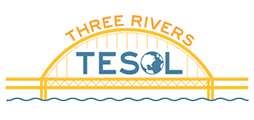Transitioning to Remote Learning at Pittsburgh Public Schools
by Meghan Anthill
 The transition to remote learning this past Spring proved challenging for everyone. However, with a little creativity, patience and some hard work, many parents, teachers, and students were able to overcome these challenges and discover some of the benefits of teaching and learning online.
The transition to remote learning this past Spring proved challenging for everyone. However, with a little creativity, patience and some hard work, many parents, teachers, and students were able to overcome these challenges and discover some of the benefits of teaching and learning online.
The initial challenges for our English Language Learners was making contact with families to keep them up to date on district information regarding school closures and the transition to remote learning. District translators spent countless hours contacting families to keep them informed and to gather information about which families had access to technology and the internet. Families were also given the option to complete paper packets, and packet distribution information was provided.
Many of our translators went above and beyond the task of translating messages, ensuring that families had the basic necessities that they needed to live. Some reached out to teachers who quickly offered money, groceries, and other supplies to help support those families most in need. The transition to online learning has reinforced that brick and mortar schools are not just buildings where students go to learn, rather they are places where students can receive two warm meals a day, feel safe, warm, connected, valued, supported, and cared for. Unfortunately, many teachers struggled to connect with and provide this support to all students and parents despite the numerous attempts that were made to reach out to families.
As students began to log in to complete work and pick up packets, more challenges emerged. Teachers and students struggled to navigate Microsoft Teams- the District’s chosen online learning platform. The lengthy paper packets were also confusing for students who didn’t know which pages they were required to complete or could not understand the directions. Due to the right to a Free Appropriate Public Education (FAPE), all students in the District received the same grade level packets. Teachers who are normally charged with the task of differentiating their lessons to meet each individual student’s needs were not able to modify the content provided by the District. District ESL teachers worked together to provide scaffolded ESL lessons to meet the needs of our ELLs, but even these scaffolds were general and could not meet the individual language needs of our diverse students.
We did the best that we could, and looking back, I would be remiss if I didn’t mention some of the positive outcomes of teaching online. Watching teachers come together to support families and each other was heartwarming. I also enjoyed getting to know the handful of students that worked online daily at a deeper level than I could have in the classroom. For the students that used personal technology, their small cameras provided a window into their home lives that is rarely visible in a traditional classroom setting. The small group size and limited interruptions allowed the opportunity to complete work in a timely manner and additional time to engage in other topics or play games.
While students missed out on face to face interactions and numerous other activities that could not be duplicated in a virtual setting, I believe that the students that were able to login and complete their work daily will be prepared for the upcoming school year. However, I cannot speak for all students since many of them did not have the opportunity to work online and had limited contact with their teachers. Unfortunately, for our ELLs, this learning loss will most likely include language loss as students have limited opportunities at home to hear and practice English. My hope for the Fall is that we are able to reach all of our students, whether in the classroom or online, providing them the support and care that they need to be successful.
Meghan Anthill is an ELL teacher with the Pittsburgh Public School District.
Next article: Information Literacy as an Important Component of ESL Writing Classes

